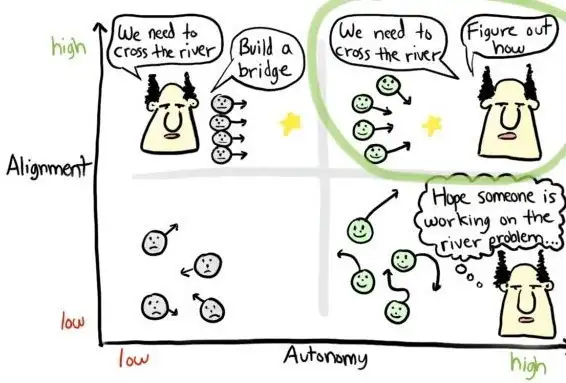Let Me Tell You What I Want
I’ve talked about user stories and ISBAT before. The idea that a user story should be focused on something the user wants to accomplish. The acceptance criteria (AC) should show how the result adds value to the user. While the AC’s are about the definition of done, they’re not about the steps along the way.
Very often however, user stories, especially on backlogs and on teams that work as groups of individuals, turn into tasks. One of the biggest reasons for that is that while ISBAT makes it clear what the end state is, it doesn’t really define the goal. Consider this user story.
As a customer, I should be able to check out.
The user is defined. The end state is defined. What more could you want in a user story? Consider this slightly extended user story.
As a customer, I should be able to check out, so that I get the product I picked.
The beginning of the story is exactly the same. The only change is adding the so that part at the end. It might not even change how you end up implementing the story. And if it doesn’t change anything, why write it down? It’s just syntactic noise with no added value.
However, there is added value. It’s slightly hidden, but there’s actually a lot of value there. The first version of the story is really just a task for the implementer. The second version is a task, with but with costs and benefits for the user stated. The benefit is that the user gets the product they picked. The cost is that they have to check out. When you recognize that you’ve but a cap on how much the “cost” to the customer can be. It has to be less than the value they receive. If the cost is less than the value, then you have a happy (and hopefully repeat) customer. If it’s higher you might have a one-time customer because of their sunk cost (they’ve already picked the product and done whatever else, so it’s worth it at that point), but you’re not going to have a repeat customer. From the customer’s standpoint there’s no value proposition.
Your goal, when coming up with user stories, is to ensure the story highlights the user’s value proposition, without constraining the folks doing the implementation. It lets the implementors working backwards from the user’s value proposition and maximize it.
If instead, you use this version of the user story,
As a customer, I should be able to get the product I picked.
you empower the folks implementing the solution to come up with a one-click solution. If you already know the user’s payment and shipping information you can have two buttons on the web page. One has the traditional checkout flow. Verify quantities, payment info, shipping info, and whatever else you need. And you can have a second one that says something like “Instant Purchase”, which takes those defaults, processes the order, and responds with a order ID and a tracking number.
That adds a lot of value to the user. It gives them the choice to pay the price in time and effort to go through the standard flow, or to save that time and effort. To have way to make the purchase with time and energy cost. It also gives the user more control over the process. Which adds more value.
Which is why you need to be care to not only make your user stories actually be user stories, not tasks, but also they need to be focused on adding value and improving the user’s cost/benefit ratio.



